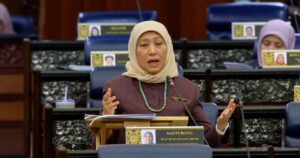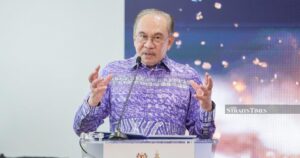TESLA’S groundbreaking 2017 Model 3 electric sedan, followed by a taller Model Y variant, ushered in the era of mass-market electric cars, made Tesla the world’s most valuable automaker and CEO Elon Musk the world’s richest man.
But years later, Tesla’s stalling car business remains almost entirely dependent on that one breakthrough, and it may continue to be for years to come.
The automaker’s only model since then, the Cybertruck, flopped.
Tesla now has next to nothing in the product pipeline for human drivers as Musk refocuses the company on self-driving technology and humanoid robots.
A new Roadster supercar, unveiled in 2017 as a prototype, has yet to arrive and would serve only a super-wealthy niche.
The automaker last year killed a project to make a US$25,000 EV and instead, earlier this month, introduced stripped-down versions of the Model 3 and Model Y costing US$37,000 and US$40,000, respectively.
And that’s it — Musk has promised no other new or redesigned human-driven vehicles.
Tesla’s apparent neglect of its core car business poses major risks for investors and will test whether the United States electric-vehicle pioneer can sustain growth, analysts say.
Tesla has not fully redesigned any model in two decades in an industry where models often have short shelf lives — and where Tesla’s leading EV rivals in China are launching new vehicles at a dizzying pace in every conceivable segment.
Instead, Tesla continues to treat its models much like iPhones that need only incremental improvements delivered in software updates to stay competitive.
Some industry observers see no reason why that cannot work.
While traditional automakers spend heavily on regular hardware and styling overhauls, Tesla has succeeded in delivering a “high-margin product with no frills” serving customers who care more about its updatable technology than its appearance, said Adrian Balfour, founder of Envorso, a technology consulting firm that works with the automotive industry.
“I don’t think they have to do a tonne of redesign-type work” to vehicles like its best-selling Model Y, he said.
Others argue that Tesla cannot indefinitely defy the automotive industry’s law of gravity — that sales fall as models age.
Tom Libby, an S&P Global Mobility analyst, said Tesla’s customer loyalty rate plunged last year and improved only after Tesla doubled its average spending on product incentives.
“The data show that Tesla is like any other brand. Over the long term, there’s going to have to be some major product actions or the brand will keep going down.”
Tesla vehicle sales fell six per cent through the first three quarters of this year.
Now it faces steep challenges from US President Donald Trump‘s sweeping rollback of government support for EVs, including a US$7,500-per-vehicle tax credit for consumers that expired last month.
The pending tax-credit expiration boosted Tesla vehicle sales in the third quarter as customers hurried purchases to get the subsidy. That boosted revenue in quarterly financial results the company released on Wednesday.
But profit nonetheless fell by 37 per cent because of higher costs from Trump‘s tariffs, increased research-and-development spending and falling revenue from the sale of government regulatory credits to other automakers.
Musk and other Tesla executives said little during the earnings call about its current automotive business, which accounted for 88 per cent of its third-quarter revenue, and focused instead on future plans for self-driving robotaxis and humanoid robots.
When Tesla recently made cosmetic updates to the models 3 and Y — a “refresh” in industry parlance — the subtle changes were not enough to generate the sales bumps often gained by traditional automakers after major redesigns of models from the ground up, Libby said.
On average, automakers in the US overhaul their models every eight years, according to S&P Global Mobility data, a time frame that has shortened over the last decade.
Many mass-market models are redesigned more frequently; trucks and luxury vehicles are overhauled less often.
The fast iteration has allowed Chinese EV makers to “keep up with trends, keep up with what consumer products are doing”, said Dan Hearsch, co-leader of the automotive and industrial practice at consultancy AlixPartners.
“It’s half the time, and it’s also half the fixed costs.”
The writer is from Reuters
© New Straits Times Press (M) Bhd






